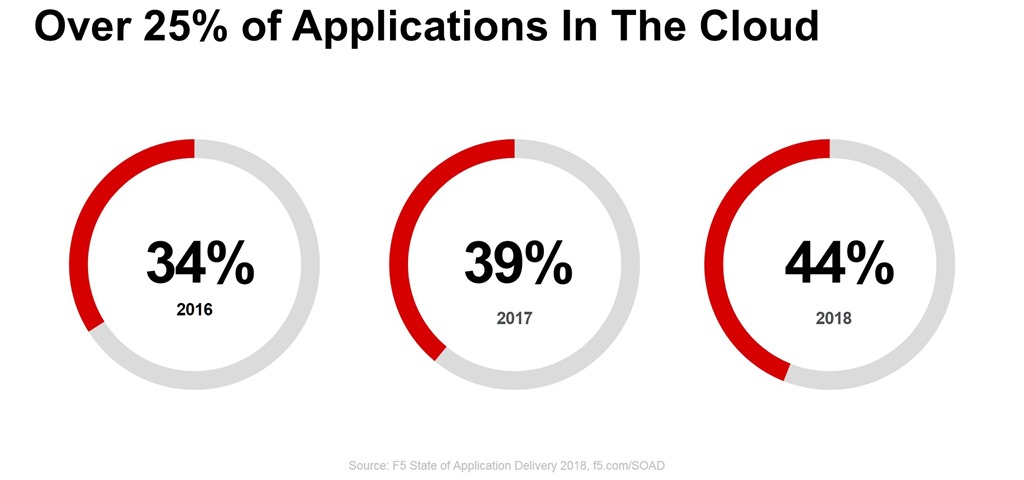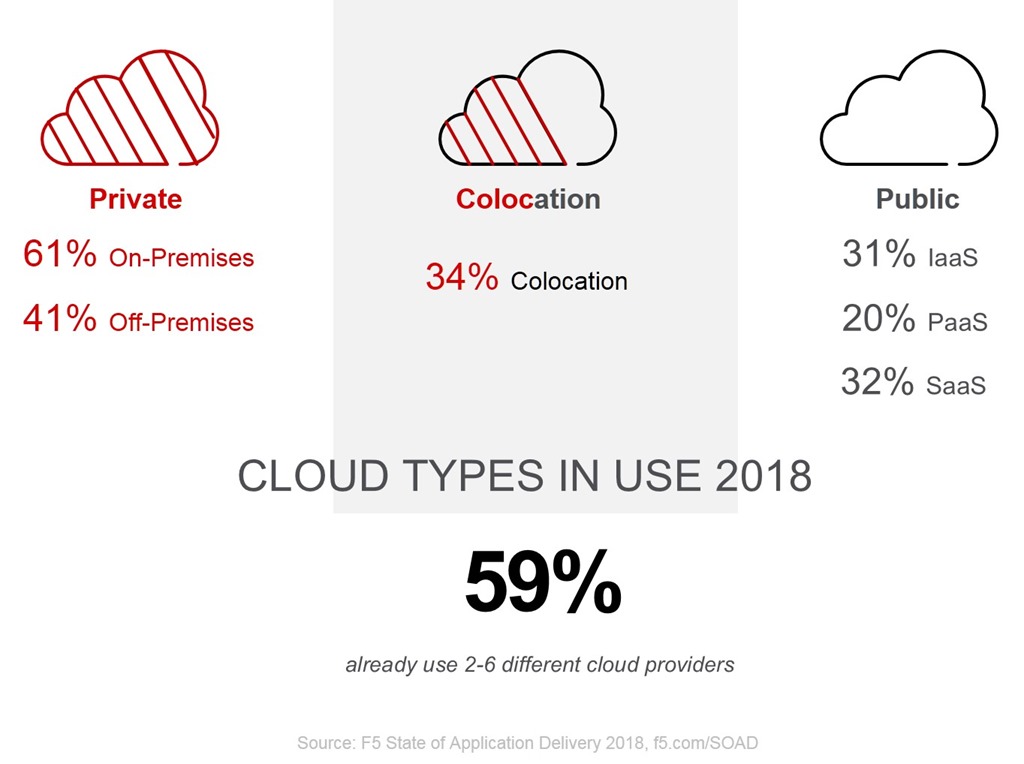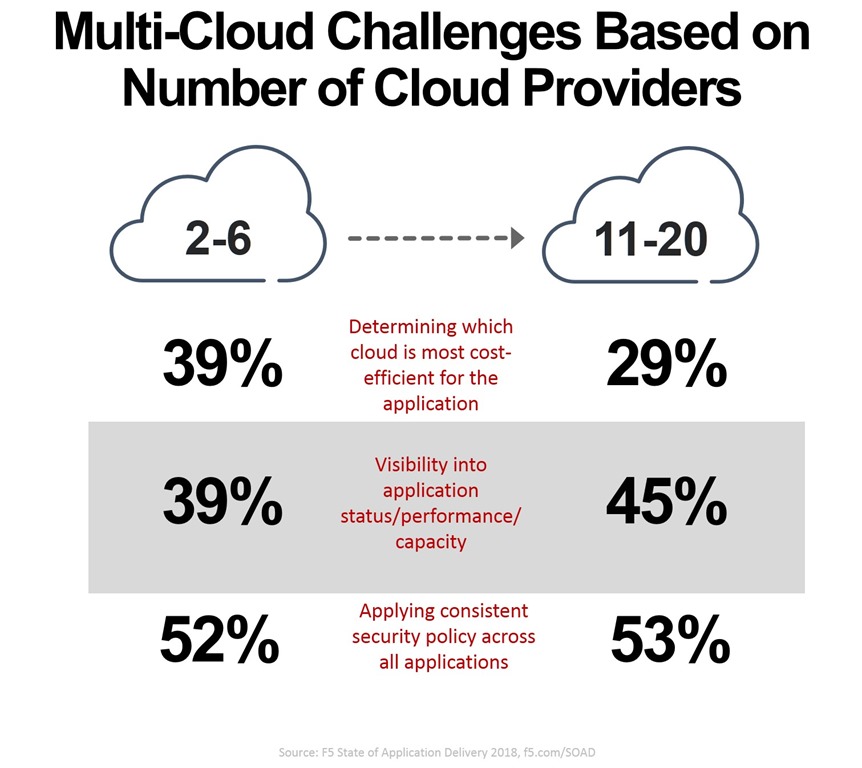Stand der Anwendungsbereitstellung 2018: Multi-Cloud ist nicht nur Marketing
Es kommt uns vor, als hätten wir erst gestern den Begriff „Hybrid-Cloud“ verwendet und uns wie Fischweiber über seine Bedeutung gestritten. In der zweiten Hälfte des Jahres 2017 tauchte der Begriff „Multi-Cloud“ auf (mit vielen der gleichen Argumente bezüglich seiner Bedeutung).
Mittlerweile erscheint mir Multi-Cloud weitaus selbstverständlicher als es Hybrid jemals war, aber falls Sie sich das fragen, hier ist die Erklärung: Es bedeutet, dass Sie mehrere Clouds verwenden, um Anwendungen zu entwickeln, einzusetzen und bereitzustellen. Öffentlich, privat, vor Ort, außerhalb, Cloud-Verbindungen, SaaS … Multi-Cloud bedeutet, dass Sie alle Ihre Optionen nutzen, um Ihr wachsendes Anwendungsportfolio bereitzustellen.

IT-Zyniker – von denen es aufgrund jahrelanger Hype-Zyklen und neuer „Trends“ eine Überzahl gibt – könnten diesem Begriff gegenüber misstrauisch sein. Viele halten es vielleicht für nicht viel mehr als den neuesten Marketing-Wahnsinn.
Ich möchte Ihnen anhand der Daten sagen, dass es sich nicht nur um Marketing handelt. Für diejenigen, die derzeit Anwendungen über mehrere Clouds hinweg verwalten, mag das Wahnsinn sein, aber es ist nicht nur Marketing.
Von den über 3.000 Teilnehmern unserer Umfrage „State of Application Delivery“ von 2018 arbeiten 87 % bereits in einer Multi-Cloud-Welt. Diese Entwicklung steht im Einklang mit dem anhaltenden Anstieg von 5 % im Vergleich zum Vorjahr bei den Unternehmen, die derzeit planen, bis zum Jahresende mehr als 25 % ihrer Anwendungen in einer Cloud-Umgebung bereitzustellen.
Das wirft die Frage auf, für welche Cloud-Umgebung sie sich entscheiden werden?
Wie wir bei unserer Untersuchung der Trends der digitalen Transformation festgestellt haben, wählen Unternehmen die Bereitstellungsorte meist auf Anwendungsbasis aus. Sie wägen Kosten, Sicherheit und unzählige andere Faktoren ab, um für alle unterschiedlichen Wolkenformationen eine Antwort zu finden. Und ich meine wirklich alle.

Im letzten Jahr stellten wir fest, dass die Befragten im Durchschnitt 1,8 verschiedene Cloud-Modelle (keine Anbieter, nur Modelle) verwendeten. Dieses Jahr stieg die Zahl der genutzten Cloud-Modelle auf durchschnittlich 2,1. Als wir konkret fragten, was das im Hinblick auf Cloud -Anbieter bedeutet, stellten wir fest, dass die Mehrheit (59 %) bereits in 2–6 verschiedene Anbieter investiert hat. Fast jeder Zehnte (9 %) verwaltet derzeit 7–10 verschiedene Cloud-Anbieter.
Die Befragten agieren offensichtlich bereits in einer Multi-Cloud-Welt und verwalten Anwendungen über verschiedene Anbieter und Modelle hinweg. Tatsächlich konnte bei jedem Modell gegenüber 2017 ein Anstieg verzeichnet werden. Was wir allerdings beobachten, ist ein Trend zu mehr öffentlichen Diensten und mehr Off-Premises-Aktivitäten. So stieg die Nutzung von On-Premises-Privatlösungen im Vergleich zum Vorjahreszeitraum lediglich um 1 %, während öffentliche IaaS-Lösungen um 6 % und Off-Premises-Privatlösungen um satte 11 % zulegten.
Wenn die Befragten nur in ein Cloud-Modell investiert haben, ist es mit 51 % nach wie vor am wahrscheinlichsten, dass es sich dabei um ein privates On-Premise-Modell handelt. Allerdings gibt es ein Wachstum bei anderen Modellen als „bevorzugte“ Cloud und nichts in den Daten deutet darauf hin, dass sich dieser Trend wahrscheinlich nicht fortsetzen wird.
Einer stärkeren Verbreitung externer öffentlicher Cloud-Angebote stehen noch immer Herausforderungen im Weg, die bewältigt werden müssen. Es gibt, wenig überraschend, Herausforderungen im Bereich der Sicherheit und Leistung. Lediglich 5 % der Befragten gaben an, dass sie mit Multi-Cloud keine Probleme hätten. Alle anderen taten es. Für 42 % der Befragten war die Umsetzung einheitlicher Sicherheitsrichtlinien für alle Anwendungen die größte Herausforderung. Knapp dahinter folgte auch die Sicherheit – und hier insbesondere die Herausforderung, Anwendungen vor bestehenden und neuen Angriffen zu schützen. Vierzig Prozent (40 %) bezeichneten dies als Herausforderung. 33 % haben Probleme mit der Optimierung der Anwendungsleistung. Die Sorge hinsichtlich der Leistung ist aus zwei Gründen groß: Erstens, weil es nicht um Sicherheit geht. Zweitens, weil eine der größten Auswirkungen der digitalen Transformation die Umstellung auf die Bereitstellung von Anwendungen aus der öffentlichen Cloud war. Unabhängig davon, ob diese Anwendungen für den privaten oder geschäftlichen Gebrauch bestimmt sind, ist die Leistung von entscheidender Bedeutung. Langsame oder nicht reagierende geschäftsbezogene Apps können Produktivitätsgewinne zunichte machen. Noch schädlicher ist dies bei öffentlich zugänglichen Anwendungen: 8 von 10 Kunden haben schon einmal die unruhigen Finger einer schlecht funktionierenden Anwendung auf „Löschen“ gedrückt.

Interessanterweise scheint die Anzahl der Anbieter, die eine Multi-Cloud-Umgebung bilden, manchmal einen Einfluss auf diese Herausforderungen zu haben.
Wir stellen fest, dass die Ermittlung der Kosteneffizienz verschiedener Cloud-Anbieter immer schwieriger wird, je mehr Anbieter hinzukommen. Umgekehrt wird die Transparenz hinsichtlich der Anwendungsintegrität (Status, Leistung und Kapazität) schwieriger, wenn ein Unternehmen mehr Anbieter nutzt.
Interessanterweise scheint die Anzahl der genutzten Anbieter wenig Einfluss auf Herausforderungen wie die Optimierung der Leistung und konsistente Sicherheitsrichtlinien zu haben. 41 % derjenigen, die 2–6 Cloud-Anbieter nutzen, und 40 % derjenigen, die 11–20 Anbieter nutzen, gaben an, dass die Leistungsoptimierung eine Herausforderung darstellt.
Diese Herausforderungen sind – ebenso wie ihre Betriebsumgebung – real und müssen angegangen werden, insbesondere angesichts der Tatsache, dass immer mehr Anbieter im Einsatz sind. Wenn unterschiedliche Betriebsmodelle, APIs, Konsolen und Anwendungsservices im Einsatz sind, kann Cloud-Chaos schnell zur Normalität werden und alle betrieblichen Vorteile zunichtemachen, die möglicherweise durch die Wahl der besten Cloud für die Anwendung erzielt wurden.
Multi-Cloud ist nicht nur Marketing. Es ist eine reale Sache, mit realen Herausforderungen, denen sich echte Organisationen derzeit stellen müssen.
Weitere Informationen zur digitalen Transformation , Multi-Cloud, Anwendungsdiensten, Sicherheit, Automatisierung und der fortlaufenden NetOps-Transformation erhalten Sie, indem Sie sich Ihr eigenes Exemplar unseres Berichts „State of Application Delivery 2018“ holen und uns auf Twitter unter @f5networks und/oder dem Hashtag #soad18 folgen. Und bleiben Sie dran – in den kommenden Blogs werden wir Ihnen weitere Einblicke geben (einschließlich Daten und Perspektiven, die nicht im Bericht enthalten sind).
